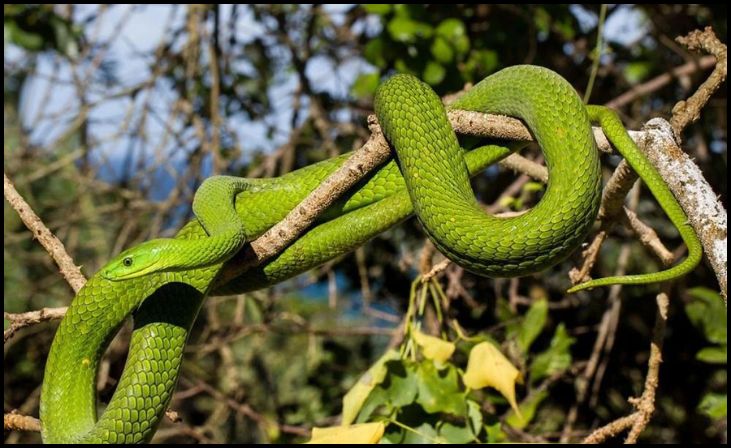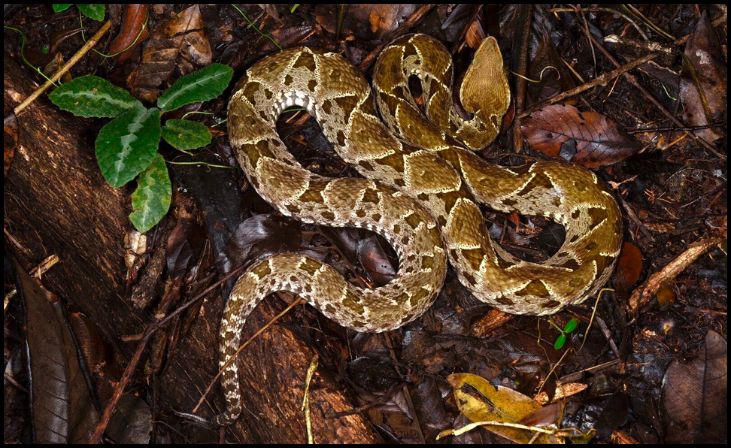Snakes have fascinated and frightened humans for centuries. Their silent movement, potent venom, and the lethal danger they represent make them both awe-inspiring and terrifying. Understanding the deadliest snakes in the wild is crucial, not only for appreciating their place in the ecosystem but also for staying safe. Let’s dive into the top 8 deadliest snakes and explore what makes each of them uniquely dangerous.
Green Mamba

The Green Mamba, native to East Africa, is a stunning snake with vibrant green coloration that allows it to blend seamlessly into the lush foliage of its forest home. This camouflage is its primary defense mechanism, but don’t let its beauty fool you. The Green Mamba’s venom is highly neurotoxic, meaning it attacks the nervous system, leading to rapid and severe symptoms including dizziness, difficulty breathing, and paralysis. Although generally shy, this snake will not hesitate to defend itself if threatened, making human encounters particularly dangerous.
Cape Cobra
The Cape Cobra, found in southern Africa, is a highly venomous snake with a potent neurotoxin. This cobra is notable for its variable coloration, ranging from yellow to brown to almost black, which can sometimes make it difficult to identify. Its venom can cause respiratory failure and death within hours if untreated. Cape Cobras are known to be quite aggressive when cornered, and their tendency to enter human habitats in search of food significantly increases the risk of snakebites in rural areas.
Black Mamba
Arguably the most feared snake in Africa, the Black Mamba is notorious for its speed and lethal bites. Unlike its name suggests, the Black Mamba is not truly black but rather a gray to dark brown, with the inside of its mouth being inky black. This snake can strike multiple times in a single attack, delivering a neurotoxic venom that can cause collapse within 45 minutes. Its aggressiveness and ability to move at speeds up to 12 miles per hour add to its terrifying reputation. Historically, the Black Mamba has been a subject of numerous African legends, underscoring its feared status.
Yellow-bellied Sea Snake
The Yellow-bellied Sea Snake is an extraordinary creature adapted to life in tropical and subtropical waters. Its body is adapted for swimming, with a paddle-like tail and the ability to absorb oxygen through its skin while submerged. This snake’s venom is a potent mix of neurotoxins and myotoxins, which can cause severe muscle damage and paralysis. While human encounters are rare due to its open ocean habitat, the Yellow-bellied Sea Snake remains a formidable presence in its marine environment.
Fer-de-Lance

Known for its aggressive nature, the Fer-de-Lance is a highly dangerous pit viper found in Central and South America. This snake, also called Bothrops asper, has a reputation for being quick to strike when threatened. Its venom is hemotoxic, causing extensive tissue damage, pain, and potentially fatal bleeding. The Fer-de-Lance is responsible for a significant number of snakebite incidents in its range, particularly because it often inhabits areas close to human dwellings and agricultural fields.
Desert Horned Viper
The Desert Horned Viper, with its distinctive horn-like scales above its eyes, is a master of desert survival. Found in North Africa and parts of the Middle East, this snake uses its natural camouflage to blend into the sandy environment and ambush prey. Its venom, while not the most potent, is still dangerous, causing pain, swelling, and in some cases, more severe symptoms. Human encounters are rare due to its reclusive nature and preference for remote desert areas.
Eastern Brown Snake
Native to eastern Australia, the Eastern Brown Snake is one of the world’s most venomous snakes. Its venom contains a mix of neurotoxins and coagulants, which can cause progressive paralysis and uncontrollable bleeding. Despite its generally shy nature, the Eastern Brown Snake is highly defensive and will strike if it feels threatened. This species is often found in populated areas, increasing the risk of human encounters and bites.
Saw-scaled Viper

The Saw-scaled Viper, found in parts of Africa, the Middle East, and South Asia, is known for its unique defensive behavior. When threatened, it rubs its scales together to produce a distinctive hissing sound. This small but highly venomous snake has a potent venom that can cause severe pain, bleeding, and in some cases, death. The Saw-scaled Viper is responsible for a significant number of snakebite cases in its range, affecting both humans and livestock.

